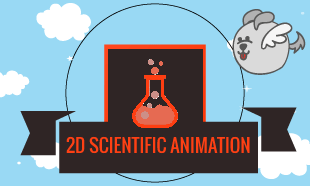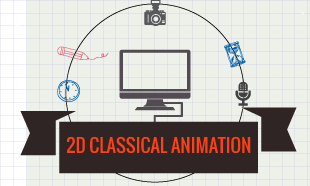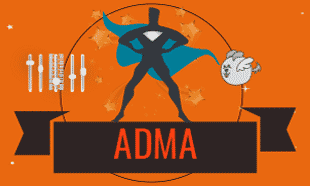Adv. Certification in Scientific Animation
Get a Call
INTRODUCTION
The 2D Media and Scientific Animation is the generation of illusive motion using two-dimensional models. It is often known as the traditional Animation and marks the basis for the principles of Animation. 2D Animation can be fully executed by hand or by the use of a 2D software. It is still widely used for films and Commercials in both Media World and the World of Science
OBJECTIVE
A 2D Media and Scientific Animation course that would teach the student the fundamentals of creating a 2D animation
COURSE OUTLINE
- Introduction to 2D animation
- The 12 Principles of Animation
- 2D Character and Background Design
- Key Frame Animation
- Traditional Animation Techniques
- Morphing Features of 2D animation software
- 2D Character Rigging
- 2D Walk Cycles
- 2D Lip Sync
- Action Scripting
COURSE BREAKDOWN
MODULE 1
Introduction to 2D animation
- What is Animation?
- Understanding Keyframes and Tweens
- Understanding Deformations
- Difference between 2D and 3D animation
- Traditional Animation by hand
- Traditional Animation by Software
MODULE 2
The 12 Principles of Animation
- Timing and Spacing
- Squash and Stretch
- Straight ahead and pose to pose
- Arcs
- Follow Through and Overlap
- Slow in and Slow out
- Anticipation
- Secondary Action
- Exaggeration
- Solid Drawing
- Appeal
- Staging
MODULE 3
2D Character and Background Design
- The use of Sketches
- Placing sketches into Software
- Use of Silhouette for right and left arms, right and left legs, heads, shoulders, and torso
- Shadows and highlights
- Embellishment Addition
- Coloring
MODULE 4
Key Frame Animation
- Setting Keyframes in the timeline view
- Use of Data Views with Keyframes
- Setting Pivot points and Hierarchies setting for keyframe animation
- Keyframe animation using inverse kinematics
MODULE 5
Traditional Animation Techniques
- Visualizing animation through the use of Thumbnails
- Sketching Key poses
- Breakdown Pose Sketches
- In-betweens sketching
- Applying for Line Work
- Flattening Linework and creating Color Art
- Coloring our Animated Character
- Flattening Linework and creating Color Art from Line art
MODULE 6
Morphing Features of 2D animation software
- Morphing Overview
- Timing and velocity
- Morphing Sequence of fumes and grass
- Character Morphing
- Placement of Morphs
MODULE 7
2D Character Rigging
- Rigging with Curve Deformers
- Setting up Hierarchy for curve deformation rig
- Deform Module
- Curve Deformers to rig a Parameter
MODULE 8
2D Walk Cycles
- Contact pose
- Down pose
- Passing pose
- Up pose
MODULE 9
2D Lip Sync
- Drawing Phonemes for lip sync
- Auto Lipsync
MODULE 10
Action Scripting
- Writing simple 2D animation Scripts.
BY THE END OF THE 2D Media and Scientific Animation COURSE, STUDENTS WOULD BE ABLE TO
- Make Realistic 2D animations.
SOFTWARE COVERED
- ADOBE Photoshop
- ADOBE Flash
- Toon Boom
- Pencil
- Adobe After Effects
- Autodesk Animator
- Swish
CAREER OPTIONS AFTER COURSE
Students who have completed this course have the following career options
- Digital Painting Animation
- 2D Animator
- 2D Matte Painting
- Texturing Artist
- Sketch Artist
- Story Board Artist
- White Board Animator
WHY TGC?
TGC India is a leading Graphics and Animation Institute in Delhi with branches across the country. TGC India has been in the field of Multimedia Education for over 10 years and has well trained and highly experienced staff. A lot of local and foreign students have been trained in TGC India and these students would recommend TGC India in a heartbeat due to the Industry standard skill set and Excellent educational Environment, TGC India provides the student. Take a 2D Media and Scientific Animation Course in TGC India today and start your journey to expertise and career fulfillment.
Upcoming Batches:
Course Reviews
No Reviews found for this course.










0 Responses on Adv. Certification in Scientific Animation"